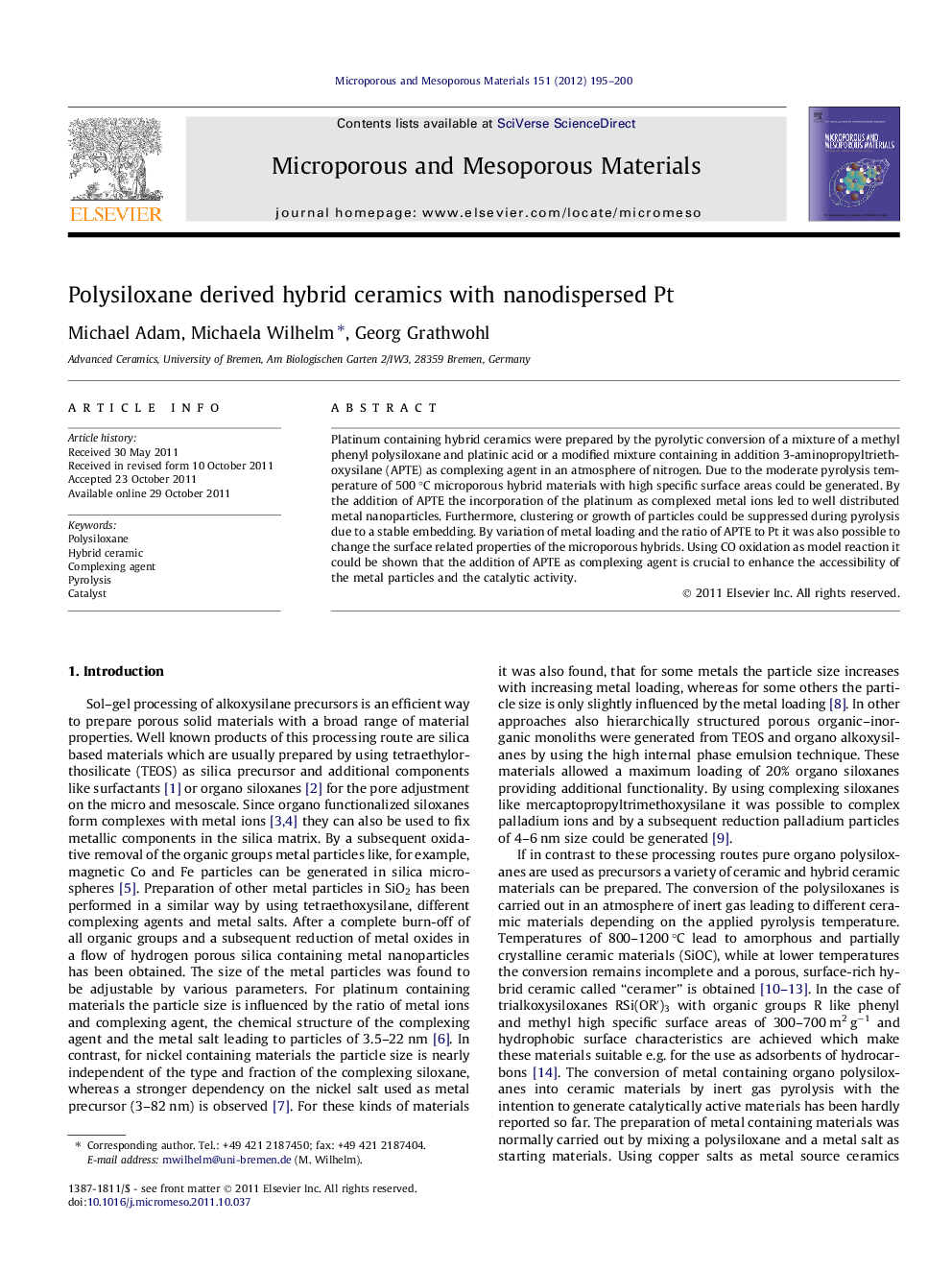| Article ID | Journal | Published Year | Pages | File Type |
|---|---|---|---|---|
| 74930 | Microporous and Mesoporous Materials | 2012 | 6 Pages |
Platinum containing hybrid ceramics were prepared by the pyrolytic conversion of a mixture of a methyl phenyl polysiloxane and platinic acid or a modified mixture containing in addition 3-aminopropyltriethoxysilane (APTE) as complexing agent in an atmosphere of nitrogen. Due to the moderate pyrolysis temperature of 500 °C microporous hybrid materials with high specific surface areas could be generated. By the addition of APTE the incorporation of the platinum as complexed metal ions led to well distributed metal nanoparticles. Furthermore, clustering or growth of particles could be suppressed during pyrolysis due to a stable embedding. By variation of metal loading and the ratio of APTE to Pt it was also possible to change the surface related properties of the microporous hybrids. Using CO oxidation as model reaction it could be shown that the addition of APTE as complexing agent is crucial to enhance the accessibility of the metal particles and the catalytic activity.
Graphical abstractFigure optionsDownload full-size imageDownload as PowerPoint slideHighlights► Generation of porous materials with high specific surface area via pyrolysis. ► In situ generation of platinum nanoparticles. ► 3-Aminopropyltriethoxysilane leads to homogeneously distributed platinum particles. ► CO oxidation experiments to elucidate catalytic activity of platinum particles.
